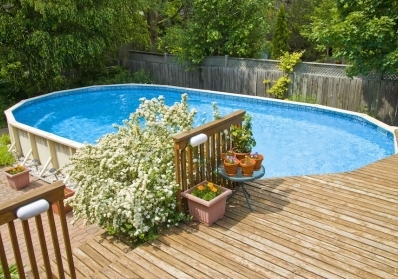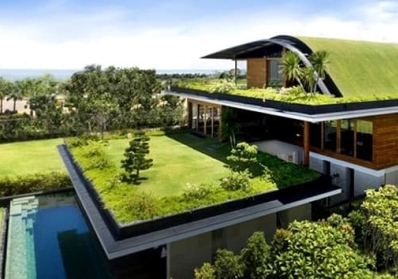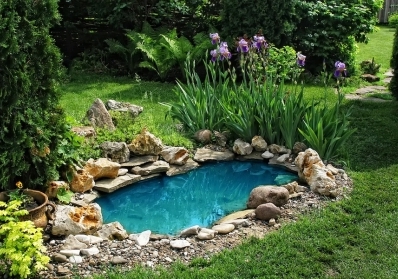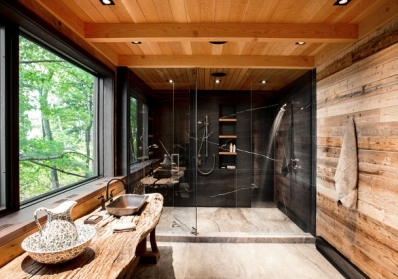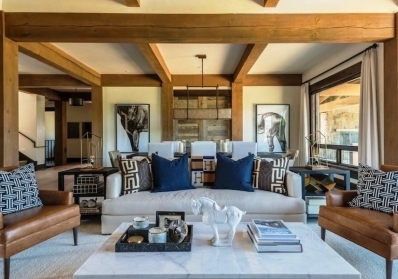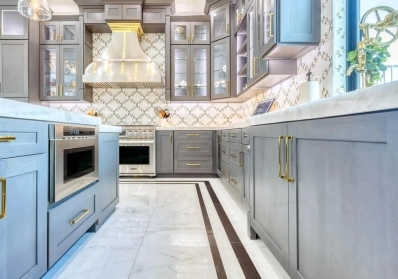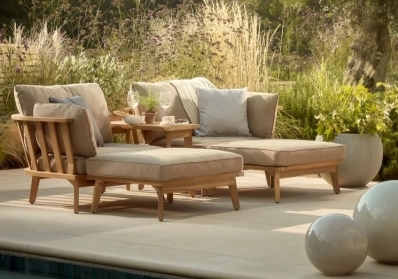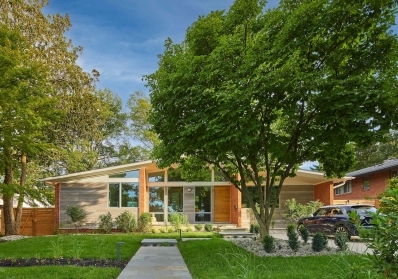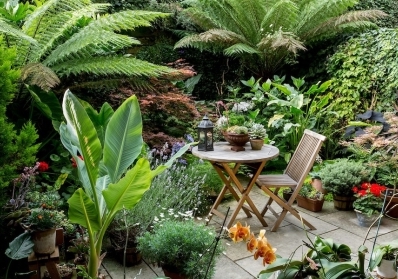In an era where environmental consciousness is paramount, the way we design and build our homes has a significant impact on the planet. Eco-friendly home design isn't just a trend; it's a responsible and forward-thinking approach to creating living spaces that are both healthy for us and sustainable for the environment. As a house designer committed to innovative and responsible practices, I'm excited to explore key principles and practical solutions for incorporating eco-friendly design into modern living.
The Principles of Eco-Friendly Home Design:
Sustainable home design revolves around minimizing environmental impact throughout a building's lifecycle, from material sourcing to energy consumption and waste management. Key principles include:
- Energy Efficiency: Reducing energy consumption through passive design strategies, insulation, efficient appliances, and renewable energy sources.
- Water Conservation: Implementing measures to reduce water usage, such as low-flow fixtures, rainwater harvesting, and efficient landscaping.
- Sustainable Materials: Choosing building materials that are renewable, recycled, locally sourced, and have a low embodied energy.
- Indoor Air Quality: Creating healthy indoor environments by using non-toxic materials and ensuring proper ventilation.
- Waste Reduction: Minimizing construction waste and designing for durability and longevity.
- Site Sensitivity: Designing homes that respect and integrate with the natural environment.
Practical Sustainable Solutions for Modern Homes:
Here are actionable ways to incorporate eco-friendly design into your current or future home:
1. Energy Efficiency: Powering Your Home Responsibly:
- Passive Solar Design: Orienting your home to maximize natural sunlight for heating in winter and minimizing direct sun exposure in summer. Incorporating overhangs, awnings, and strategically placed windows can significantly reduce energy needs.
- Superior Insulation: Investing in high-quality insulation in walls, roofs, and floors is crucial for maintaining comfortable indoor temperatures and reducing the need for heating and cooling. Consider sustainable insulation materials like recycled denim, cellulose, or sheep's wool.
- Energy-Efficient Windows and Doors: Opt for double or triple-paned windows with low-emissivity (low-E) coatings to minimize heat transfer. Choose well-sealed doors to prevent drafts.
- Energy-Efficient Appliances: Select appliances with Energy Star ratings, which indicate they meet strict energy efficiency guidelines.
- Renewable Energy Systems: Explore solar panels for electricity generation and solar water heaters to reduce reliance on fossil fuels. Government incentives and advancements in technology are making these options increasingly accessible.
- Smart Home Technology: Install smart thermostats, lighting controls, and energy monitoring systems to optimize energy usage.
2. Water Conservation: Using Water Wisely:
- Low-Flow Fixtures: Install low-flow toilets, showerheads, and faucets to significantly reduce water consumption without sacrificing performance.
- Rainwater Harvesting: Collect rainwater in barrels or underground tanks for irrigation, toilet flushing, or even laundry (with proper filtration).
- Greywater Systems: Reusing lightly used water from showers and sinks for irrigation can further reduce water demand (ensure compliance with local regulations).
- Water-Efficient Landscaping (Xeriscaping): Choose native and drought-tolerant plants that require minimal watering. Implement efficient irrigation techniques like drip systems.
3. Sustainable Materials: Building with the Planet in Mind:
- Locally Sourced Materials: Reduce transportation emissions and support local economies by choosing materials sourced within a reasonable distance.
- Recycled and Reclaimed Materials: Incorporate recycled content materials like recycled steel, glass countertops, or reclaimed wood for flooring and accents.
- Renewable Materials: Opt for materials that can be replenished naturally, such as bamboo flooring, sustainably harvested wood (FSC certified), or cork.
- Low-VOC (Volatile Organic Compound) Materials: Choose paints, adhesives, sealants, and finishes with low or zero VOCs to improve indoor air quality.
- Natural Building Materials: Explore options like straw bale, rammed earth, or cob construction for their low environmental impact and unique aesthetic.
4. Indoor Air Quality: Breathing Easier Indoors:
- Proper Ventilation: Ensure adequate natural ventilation through operable windows and cross-ventilation strategies. Consider mechanical ventilation systems with heat recovery (HRV) or energy recovery (ERV) for energy-efficient fresh air exchange.
- Non-Toxic Materials: As mentioned above, prioritize low-VOC materials to minimize the release of harmful chemicals into the indoor air.
- Air-Purifying Plants: Incorporate houseplants known for their air-purifying qualities.
- Radon Mitigation: Test for radon (a naturally occurring radioactive gas) and install mitigation systems if necessary.
5. Waste Reduction: Minimizing Our Footprint:
- Efficient Construction Practices: Implement strategies to minimize construction waste through careful planning, material optimization, and recycling of construction debris.
- Design for Durability and Longevity: Choose high-quality materials and construction techniques to ensure your home lasts for generations, reducing the need for frequent replacements.
- Flexible and Adaptable Design: Design spaces that can adapt to changing needs over time, reducing the likelihood of future renovations and waste.
6. Site Sensitivity: Respecting the Land:
- Minimize Site Disturbance: Design your home to minimize disruption to the existing landscape and natural habitats.
- Preserve Natural Features: Integrate existing trees, waterways, and natural contours into your design.
- Erosion and Sediment Control: Implement measures during construction to prevent soil erosion and water pollution.
- Permeable Paving: Use permeable materials for driveways and walkways to allow rainwater to soak into the ground, reducing runoff.
Making Sustainable Choices Accessible:
Implementing eco-friendly home design doesn't have to be an all-or-nothing approach. Even small changes can make a significant difference. Start by focusing on the areas where you can have the biggest impact within your budget and capabilities. Every step towards sustainability contributes to a healthier planet and a more comfortable and responsible way of living.

